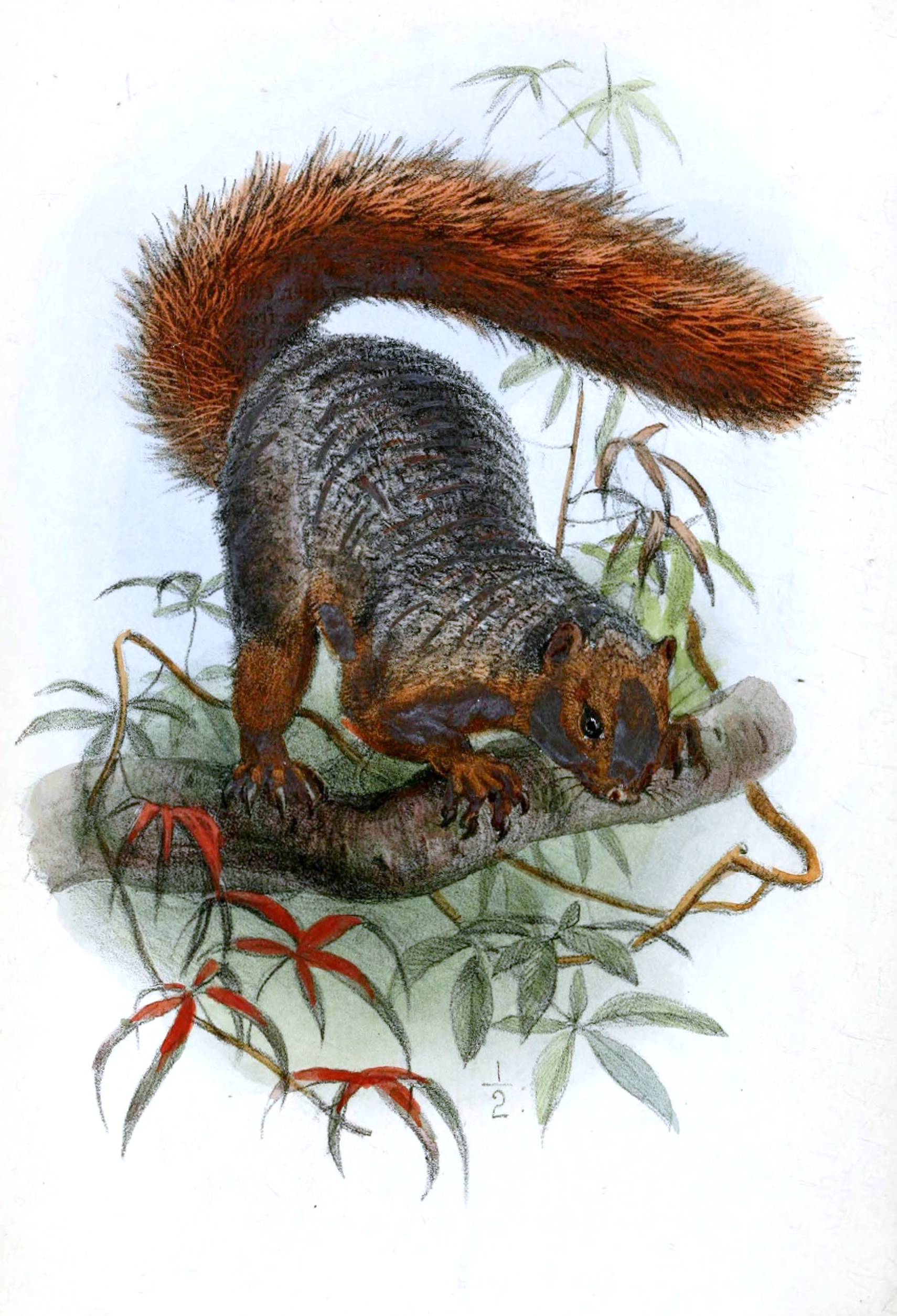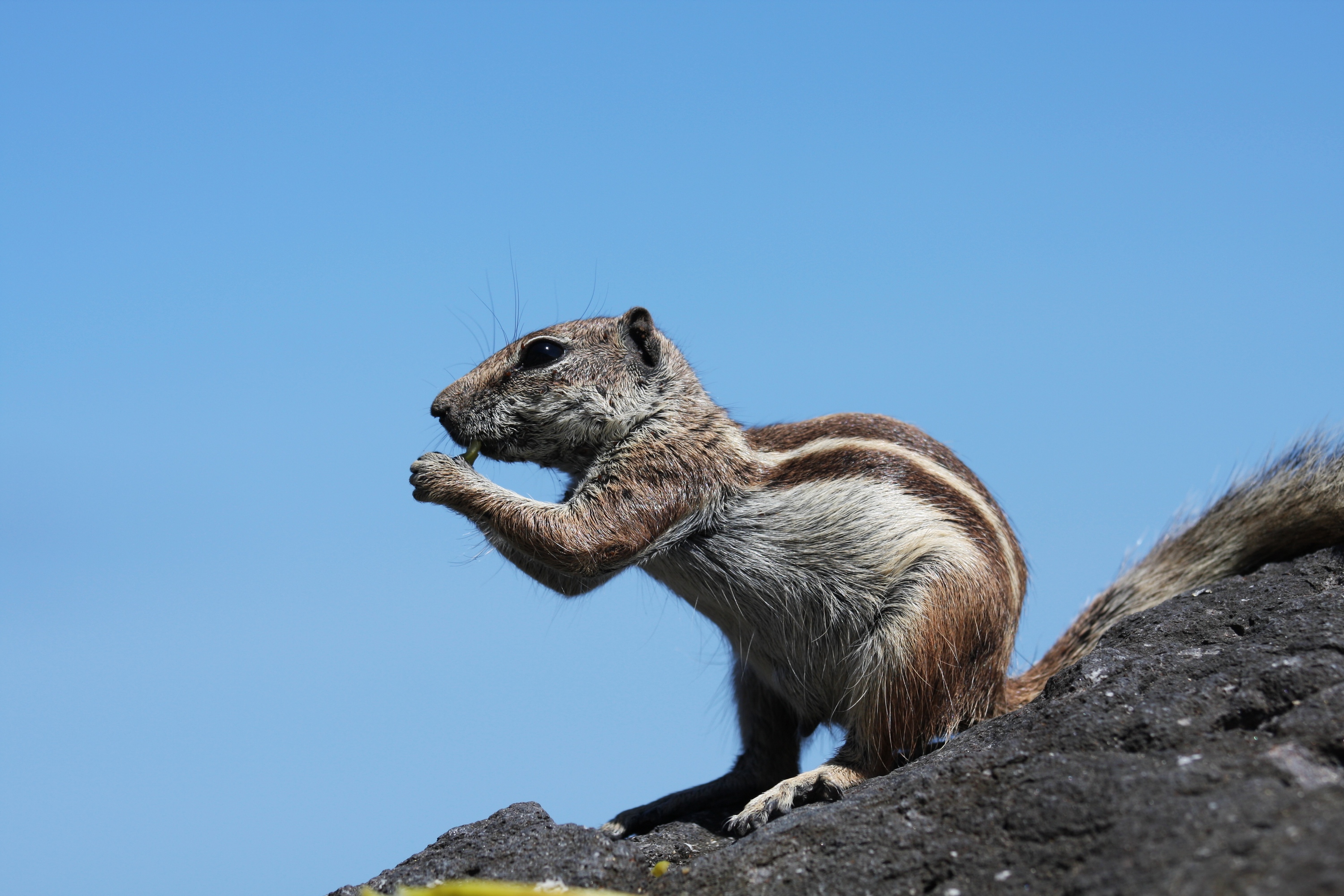Lunda rope squirrel
Bocages tree squirrels ( Funisciurus bayonii ), also called Lunda Rotschenkelhörnchen, is a little explored Hörnchenart from local African genus of Rotschenkelhörnchen ( Funisciurus ). The species name refers to the Italian scientist Enrico Pietro Bayon and the German trivial name to José Vicente Barbosa du Bocage, the erstbeschrieb the type in 1890.
Features
So far, about 30 specimens were collected. From two bellows snout-vent lengths of 167 and 190 mm, tail lengths of 178 or 170 mm and Hinterfußlängen of 42 and 41 mm are documented. In five specimens the skull length with 41 to 44 mm, the width of the skull with 24 to 26 mm and the total length of the upper tooth row from the first incisor to the third molar is given as 7.5 to 7.8 mm.
The coat on his back is plain dull olive with black spots. From the shoulder to the rump runs an indistinct, sand-colored to whitish - sand-colored side stripes. The peritoneum is gray with a sand-colored tint. The top of the head as well as the front and rear limbs are colored similarly to the back. To the eyes runs a bright ring. The long tail is greyish, black and ocher and shows no visible ring pattern. Overall, he is darker than the rest of the body. The shape of the skull is kurzschnauzig and resembles in this respect the Congo tree squirrels ( Funisciurus congicus ). The postorbital projection on the orbit is well developed. The nostrils are wide. The dental formula for back teeth is 5 / fourth The rear end of the palatal bone, is in line with the rear end of the third Mahlzahns. The number of the teats is not known.
Distribution, habitat and way of life
The distribution area of Bocages tree squirrels is limited to the north-eastern Angola and to the south of the Democratic Republic of Congo. On the basis of the work Vegetation Map of Africa South of the Tropic of Cancer by RWJ Keay from the year 1959, the German zoologist Eduard bailiff suspected in the 1960s, that the habitat moist forests comprises at low or medium altitudes, forest-savanna mosaics, woodland and wetland savannas. This assumption, however, is not yet confirmed. Over the life of the species is not known.
Status
The IUCN classifies Bocages tree squirrels in the category of " insufficient data " (data deficient ) .. It was last collected in the 1950s or 1960s, and last seen in the 1990s. Bocages tree squirrels has so far been observed only in unprotected regions. Information on hazards or about the population trend are not available.






_on_post.jpg/220px-Smiths_Bush_Squirrel_(Paraxerus_cepapi)_on_post.jpg)


